When it comes to product marketing, talk is cheap which is why I respect brands like Yeti. They let their products speak for themselves. If it could talk, their new Panga 50 waterproof duffel would be a loud-mouth braggart. I would argue it is the toughest and most weather-thwarting duffel ever made.
If you have followed the rise of the Yeti star in the last few years, you know their catalog has been gathering pages with every season. From the introduction of their soft-sided coolers to their growing line of stainless steel bottles and tumblers, they continue to forge new pathways into the backcountry. The logical next step was a brawny duffel built with many of the technologies found in their Hopper coolers.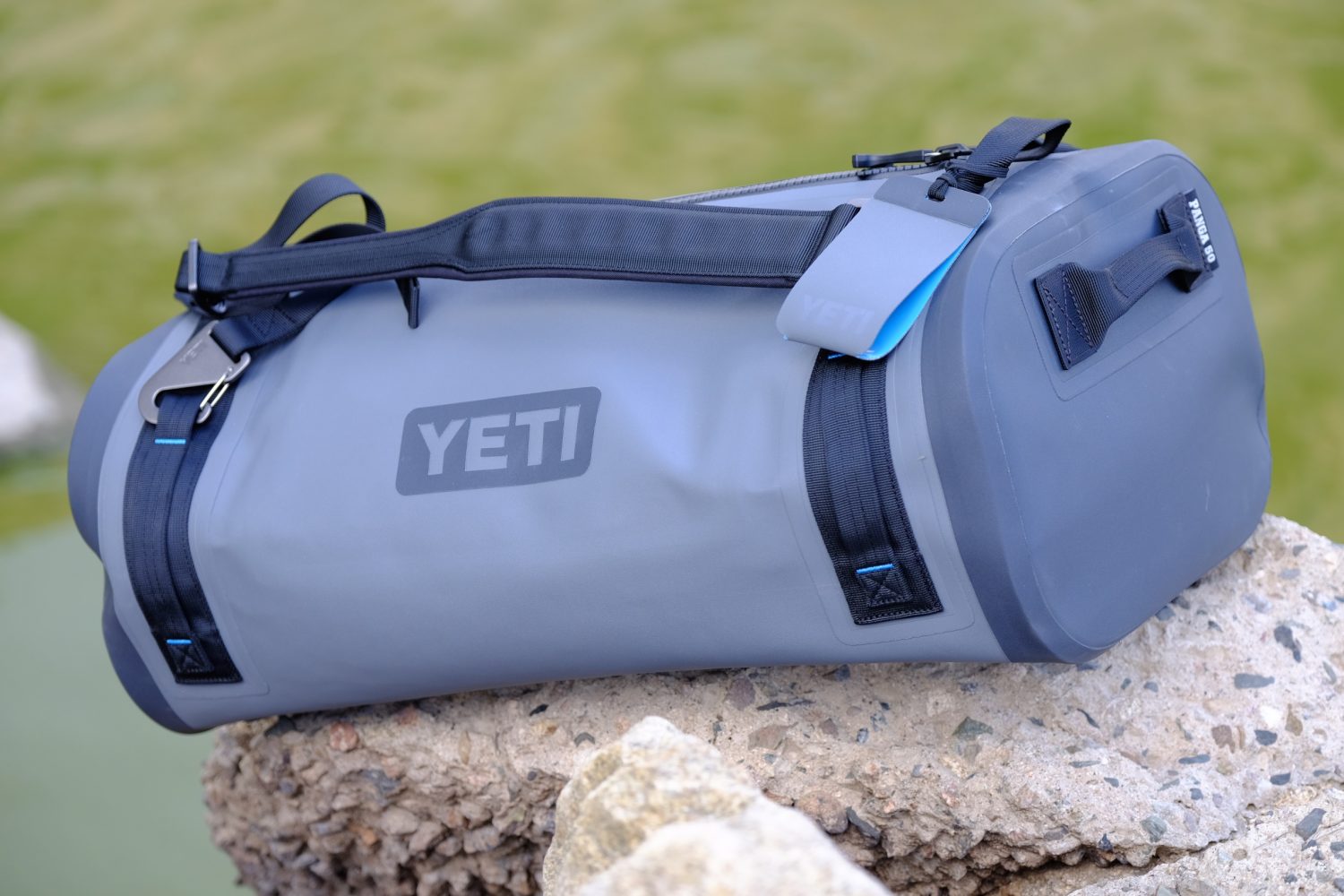
Available in 50, 75, and 100 liter sizes, I opted for the smallest of the three as it fits my light and fast style of travel. Perfect for the tail of a motorcycle it’s also sized appropriately for weekend romps, and if you underpack it slightly, you should be able to squeeze it past the gate-checkers as a carry on. In just the short time I’ve had our test sample, it’s found several ways to join the adventure.
Some of the most durable duffels on the market are made with heavy-duty 1000-denier nylon, a fabric frequently referred to as ballistic cloth. That material is as thin as tissue paper compared to the double-layered 1680-denier TPU coated ThickSkin used in the Panga. To augment the already bombproof exterior, the bottom of the duffel is protected with a thick layer of bonded EVA foam. That layer helps protect the cargo within as well as prevent the bottom of the bag from fabric damage. In all honesty, it seems unlikely I would be able to mistreat the Panga so badly it would ever develop a hole or tear.
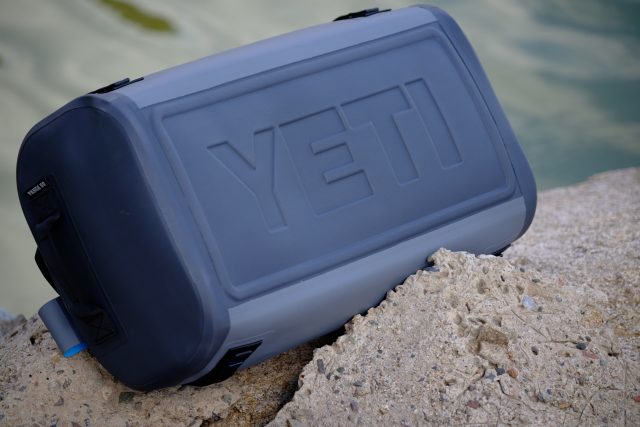

Keeping the interior bone dry is the same high-tech zipper used in Yeti’s popular Hopper soft coolers. Not only is it 100 percent watertight, it opens and closes with minimal effort thanks to a large T-handle slider and oversized teeth. The aperture into the main bag is a bit small, and it requires some fussing to get large items stowed, but it’s a worthy compromise given the protection the watertight zipper affords.
I was pleased to see Yeti omit the standard shoulder strap in favor of two equally sized backpack straps. I’m done schlepping bags around on one shoulder and prefer the more balanced carry of a two-strap system. The Panga also includes reinforced grab handles at either end and dual lash points on each side. Keeping your duffel affixed to a boat, motorcycle, or yak couldn’t be easier.
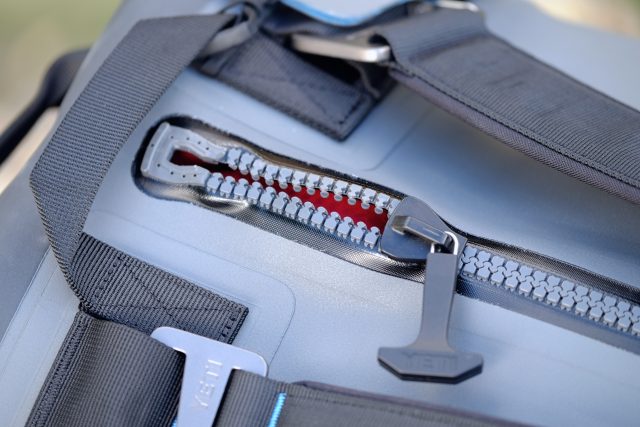

Other nice refinements include a squared-oval shape with a flat bottom to keep the duffel from rolling on its side. Within the main compartment are two mesh organizer pockets to help keep smaller essentials within easy reach, and the heavily padded pack straps are detachable for unfettered transport. The two straps are held securely to the duffel’s attachment points with—not clips as that sounds too pedestrian—but what I’d call aluminum shackles. The whole unit is outrageously overbuilt with reinforced welds, heavy bar-tack stitching, and industrial strength webbing.
I can’t imagine what else Yeti could have done to make the Panga more durable, waterproof, or convenient to use. One thing I do know, no brand is more imitated than Yeti, and knock-offs are inevitable. The Panga will be a tough act to follow for those foolish enough to try.
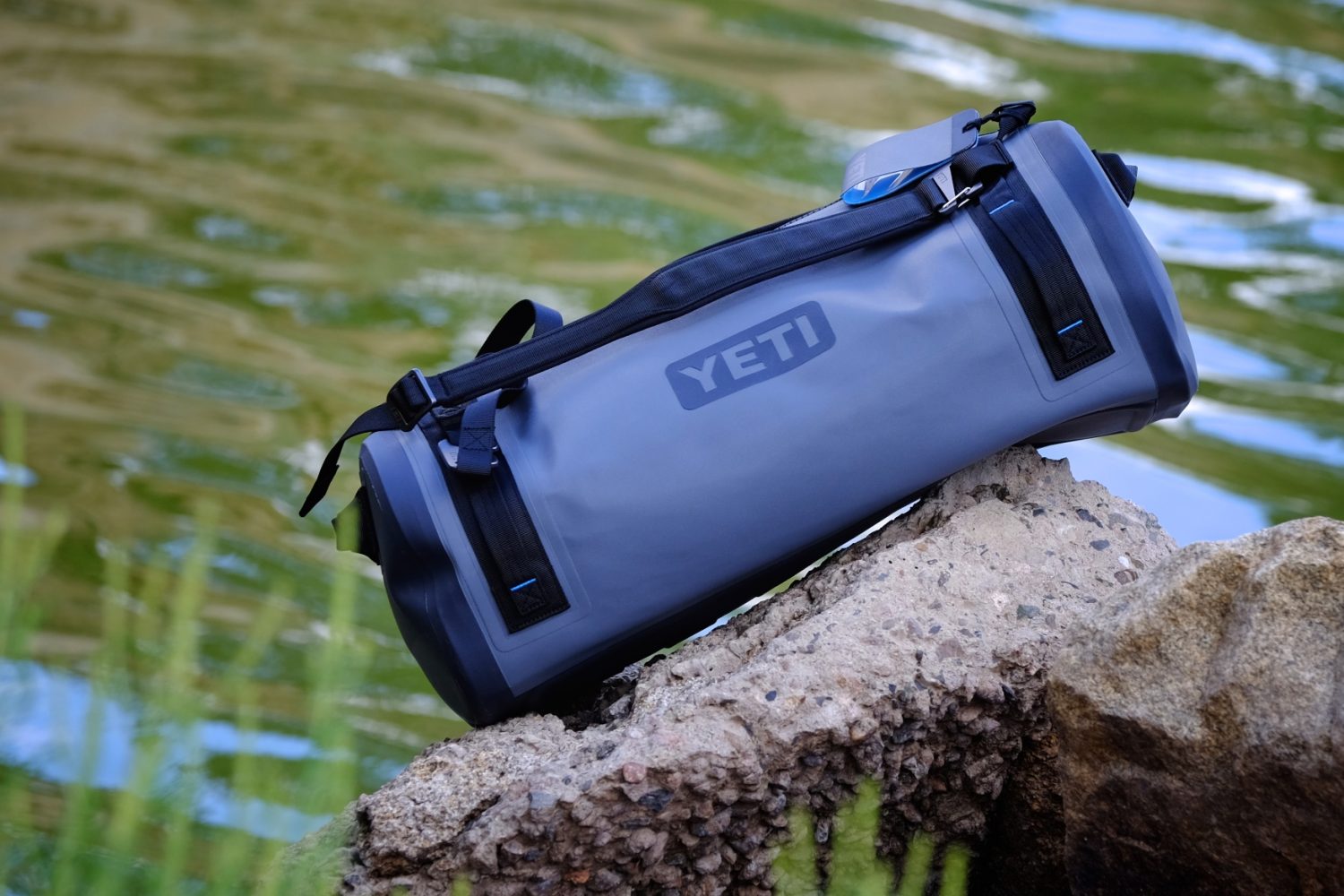


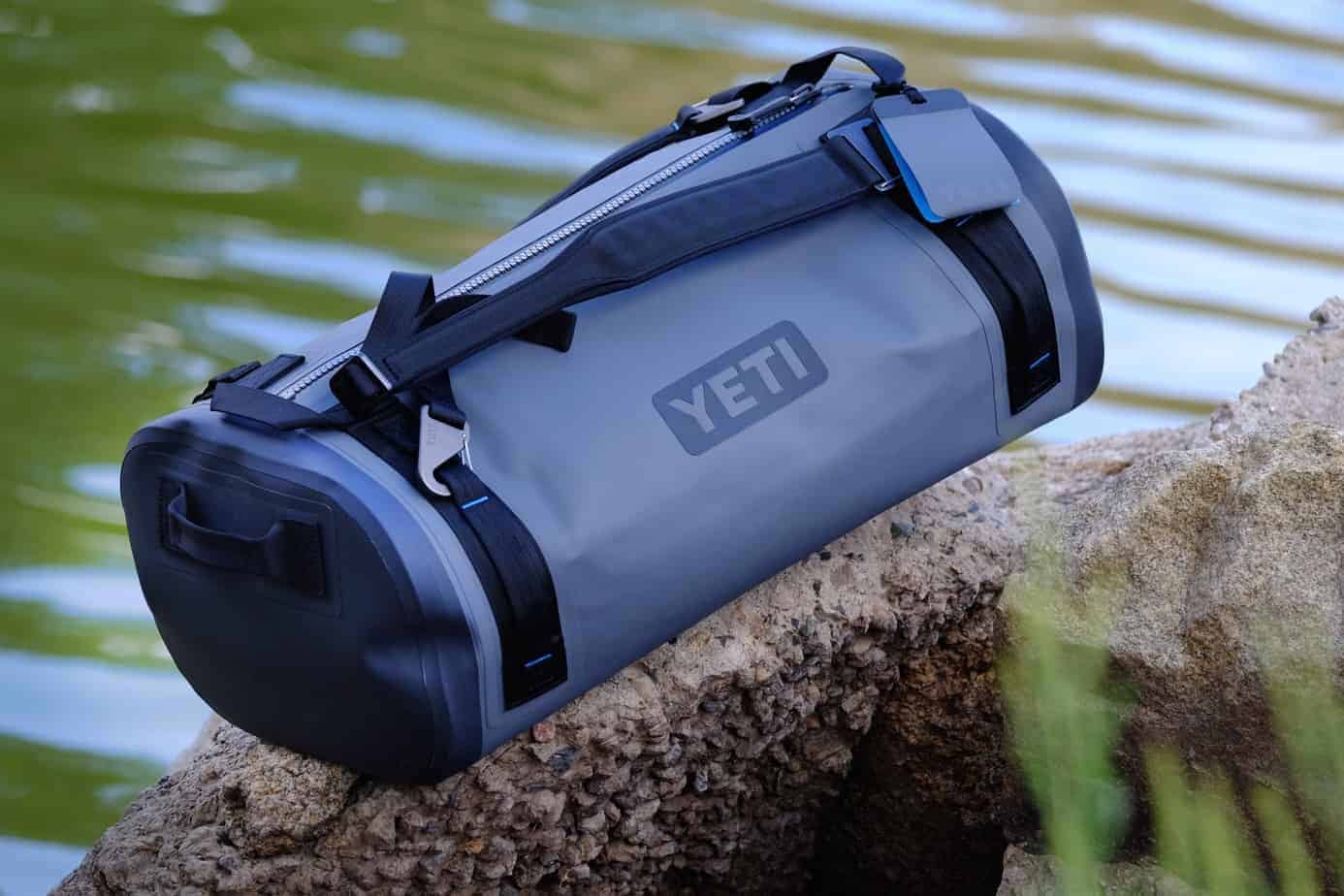
2 Comments
Mike McCrosky
August 30th, 2018 at 6:35 amI do appreciate Yeti’s sense of design, but in the end this is still nothing more than a TPU coated Dry Duffel using a T-Zip zipper …. and all for $300.00. Sorry, nothing over the top special or technical about this bag. I still can not bring myself to pay that much money for a logo.
Lee Patton
September 18th, 2018 at 12:02 amAre these adequate as white water river bags? How’s about in the basket of a roof top carrier when roof top camping, withstand elements at 70 on Interstates?